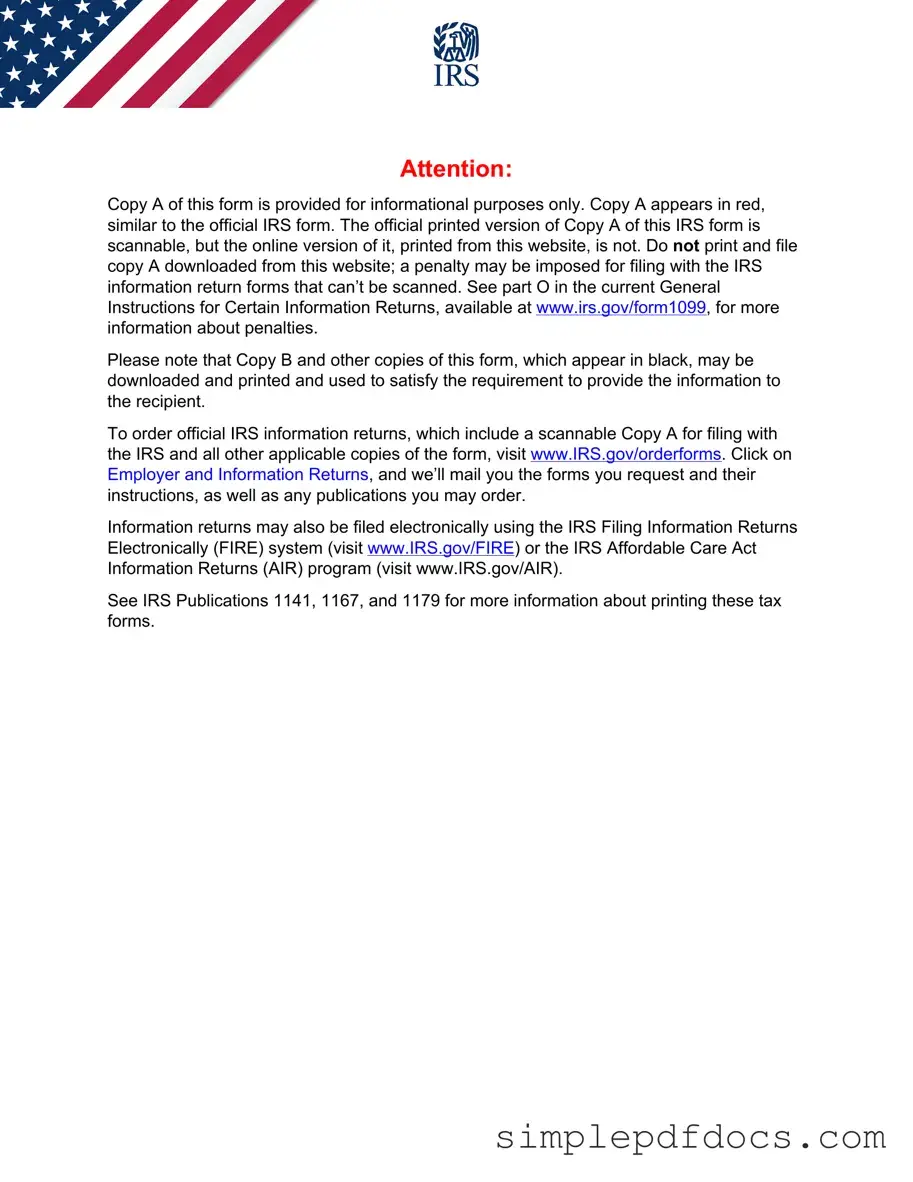The 1099-NEC form plays a crucial role in the landscape of tax reporting for nonemployee compensation. This form is primarily used to report payments made to independent contractors, freelancers, and other non-employees who have received $600 or more in a calendar year for services rendered. It is essential for both the payer and the recipient, as it ensures that the IRS is informed about income that may not have undergone withholding for federal taxes. The form includes various sections that capture vital information, such as the payer's and recipient's taxpayer identification numbers, amounts paid, and any taxes withheld. Notably, it is important to understand that the 1099-NEC is distinct from the 1099-MISC form, which is used for other types of payments. Additionally, the form comes in multiple copies, each designated for different purposes, including a copy for the IRS and a copy for the recipient. The IRS provides specific guidelines for filing this form, emphasizing the need for accuracy and timeliness to avoid penalties. Understanding the nuances of the 1099-NEC can significantly impact tax obligations and compliance for both parties involved.
